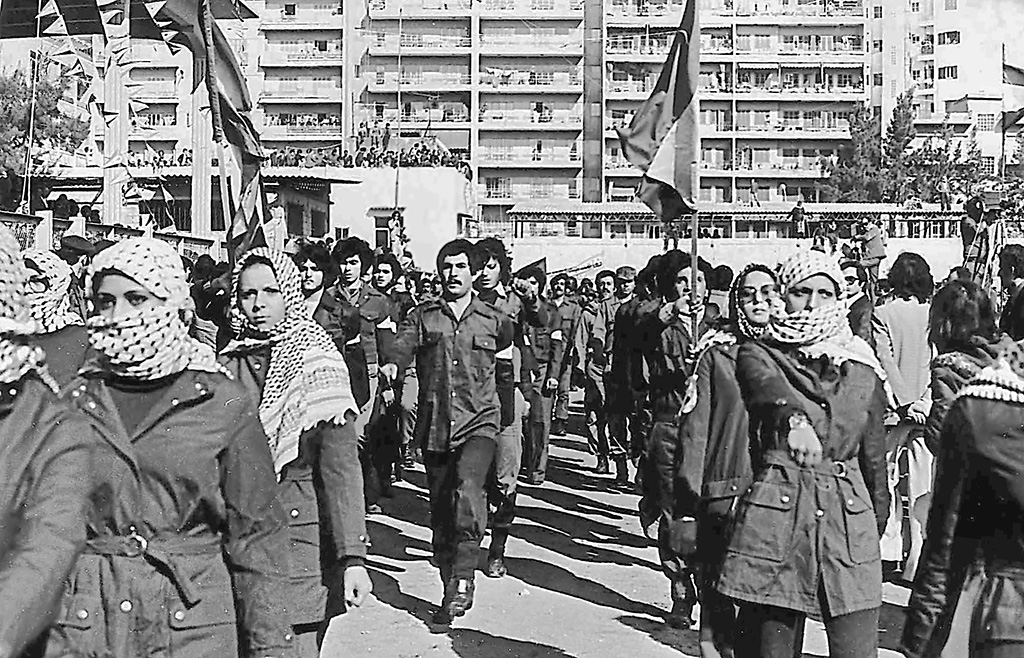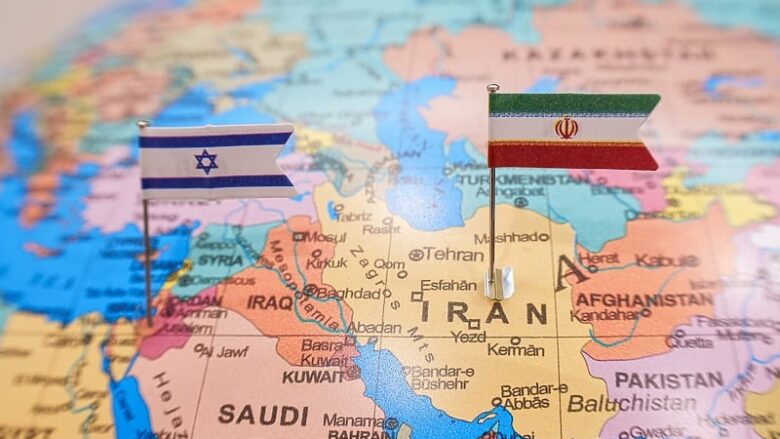History of the Israel, Lebanon, Palestine, and Iran Conflict – By Dr Harold Gunatillake

A Complex Regional Tapestry
Living on a charming island like Sri Lanka, one might not usually pay much attention to Middle East politics. But fuelled by curiosity, I decided to explore the topic, and here’s what I discovered!
Image Source : pbs.org
The history of conflicts involving Israel, Lebanon, Palestine, and Iran stretches across many decades and is intricately tied to political, religious, territorial, and socio-economic complexities.
This diverse and multifaceted confrontation has played a significant role in shaping the geopolitical dynamics of the Middle East and continues to have a lasting impact on global diplomacy.
Israel-Lebanese Conflict
image Source : .reddit
Let’s examine the Israeli-Lebanese conflict to gain a deeper understanding of its complex history. Lebanon’s involvement in the Arab Israeli conflict escalated significantly post-1948, when Palestinian refugees and fighters sought asylum in the country following the establishment of Israel.
On May 14, 1948, David Ben-Gurion, the leader of the Jewish Agency, formally proclaimed the establishment of the State of Israel. On that very day, U.S. President Harry S. Truman extended recognition to the newly established nation.
Image Source : womensagenda.com.au
During the 1960s and 1970s, the Palestinian Fedayeen conducted operations against Israel from Lebanese territory, resulting in numerous Israeli military incursions. This situation was further exacerbated by the Israeli invasion of Lebanon in 1982, which was aimed at dismantling the Palestine Liberation Organisation (PLO).
The occupation of southern Lebanon subsequently led to the emergence of Hezbollah, a Shia militia supported by Iran and Syria, which evolved into a formidable resistance force.
Image Source : shutterstock.com
Israel completed its withdrawal in 2000; however, hostilities reignited in 2006 when Hezbollah fighters captured Israeli soldiers, igniting a month-long conflict. The strife has persisted as a low- intensity struggle, characterised by sporadic border clashes and ongoing Hezbollah militarisation.
Lebanon’s engagement in the larger Israeli-Palestinian conflict primarily arises from its geographical proximity and the significant influx of Palestinian refugees during and after the year 1948. The resulting clashes with Israel contributed to the Lebanese civil war that lasted from 1975 to 1990. Israel executed two invasions of Lebanon, in 1982 and 2006, targeting the PLO and, subsequently, Hezbollah, a Shiite militant organisation supported by Iran.
Palestinian Liberation Organisation (PLO) operated from Lebanon during the 1960s and 1970s,
Image Source : wikipedia
The Creation of Israel and the Palestinian Question
The conflict’s inception can be traced back to the late 19th and early 20th centuries, characterised by the emergence of Zionism, which sought to establish a Jewish homeland, and the rise of Arab nationalism, which opposed foreign intervention in the region. The establishment of the State of Israel in 1948, after the United Nations Partition Plan, resulted in the displacement of hundreds of thousands of Palestinians, an incident referred to as the Nakba. This event heralded the commencement of persistent tensions between Israel and its Arab neighbouring states, including Lebanon.
Image Source : google book
Iran’s Influence
Iran holds a significant position in the regional dynamics, particularly through its support for Hezbollah in Lebanon and Hamas in Palestine. After the 1979 Iranian Revolution, Iran adopted a hardline stance towards Israel, labelling it as a usurper and aligning itself with factions that oppose Israeli policies. Iran’s involvement has introduced an additional layer of proxy conflict within the region, positioning it in opposition to Israel both directly and indirectly.
Image Source : telegrafi.com
Key Wars and Occupations
Several wars have punctuated this conflict:
- The Six-Day War (1967): Israel captured the West Bank, Gaza Strip, Sinai Peninsula, and Golan
- Lebanon War (1982): Israel aimed to eliminate PLO operations in southern
- Intifadas: Palestinian uprisings, primarily in the late 1980s and early 2000s, highlighting grassroots resistance against Israeli
- Hezbollah-Israel War (2006): Sparked by Hezbollah’s actions, leading to a devastating conflict in southern
Current Dynamics
Today, the conflict remains unresolved, marked by intermittent violence and complex peace negotiations. Territorial disputes over the West Bank, Gaza, and Golan Heights persist, while Iran and Israel frequently exchange hostilities. Lebanon remains a fragile state where Hezbollah’s influence continues to challenge Israeli security.
Global Implications
This regional conflict has drawn international attention and intervention, with significant powers like the United States and Russia taking vested interests. Peace remains elusive, shaped by historical narratives, religious identities, and geopolitical strategies.
Why is the US important to Israel?
The U.S. has provided strong support for Israel. It has played a key role in the promotion of good relations between Israel and its neighbouring Arab states while holding off hostility from countries like Iran.
Which country invests the most in Israel?
Image Source : en.irna.ir
United States investors contributed $ 24 billion, accounting for 73% of total foreign investments, with France contributing $ 3.7 billion. In the first half of 2024, the total amount of investments reached 11.8 billion USD across 910 transactions. The first quarter recorded 4.4 billion USD, while the second quarter achieved 7.4 billion USD.
The US-Israel relationship explained | Start Here
The US issues orders easing Syria sanctions after Trump’s pledge.
WASHINGTON, May 23 (Reuters) – The Trump administration issued directives on Friday that it stated would essentially remove sanctions on Syria, following President Donald Trump’s recent commitment to alleviate the measures to assist the nation in its reconstruction efforts, after a catastrophic civil war.
Iran’s nuclear ambitions
Donald Trump aims to limit Tehran’s nuclear capabilities to prevent a regional arms race, while Iran seeks relief from crippling sanctions on its oil economy.
Iranian and U.S. negotiators will resume talks in Rome to resolve a decades-long dispute over Iran‘s nuclear ambitions, despite Tehran’s supreme leader warning that clinching a new deal might be insurmountable amid clashing red lines.
The stakes are high for both sides. President Donald Trump wants to curtail Tehran’s potential to produce a nuclear weapon that could trigger a regional nuclear arms race. The Islamic Republic, for its part, wants to be rid of devastating sanctions on its oil-based economy.
Iranian Foreign Minister Abbas Araqchi and Trump’s Middle East envoy Steve Witkoff will hold a fifth round of talks, through Omani mediators, despite both Washington and Tehran taking a tough stance in public over Iran‘s uranium enrichment.
Although Iran insists the talks are indirect, U.S. officials have said the discussions — including the latest round on May 11 in Oman- have been both “direct and indirect.”
Conclusion
The conflict involving Israel, Lebanon, Palestine, and Iran encompasses more than mere wars or disputes; it constitutes a complex tapestry of interwoven identities, histories, and rivalries. A comprehensive understanding of its nuances necessitates an in- depth exploration of the region’s cultural, political, and social fabric, and it remains a critical issue on the global stage.
What is the conflict between Israel and Palestine?
Israeli–Palestinian conflict – The principal elements of the conflict encompass the Israeli occupation of the West Bank and Gaza Strip, the status of Jerusalem, Israeli settlements, demarcation of borders, security concerns, water rights, the permit regime in both the West Bank and Gaza Strip, the freedom of movement for Palestinians, and the Palestinian right of return.
End
Image Source : theconversation






























